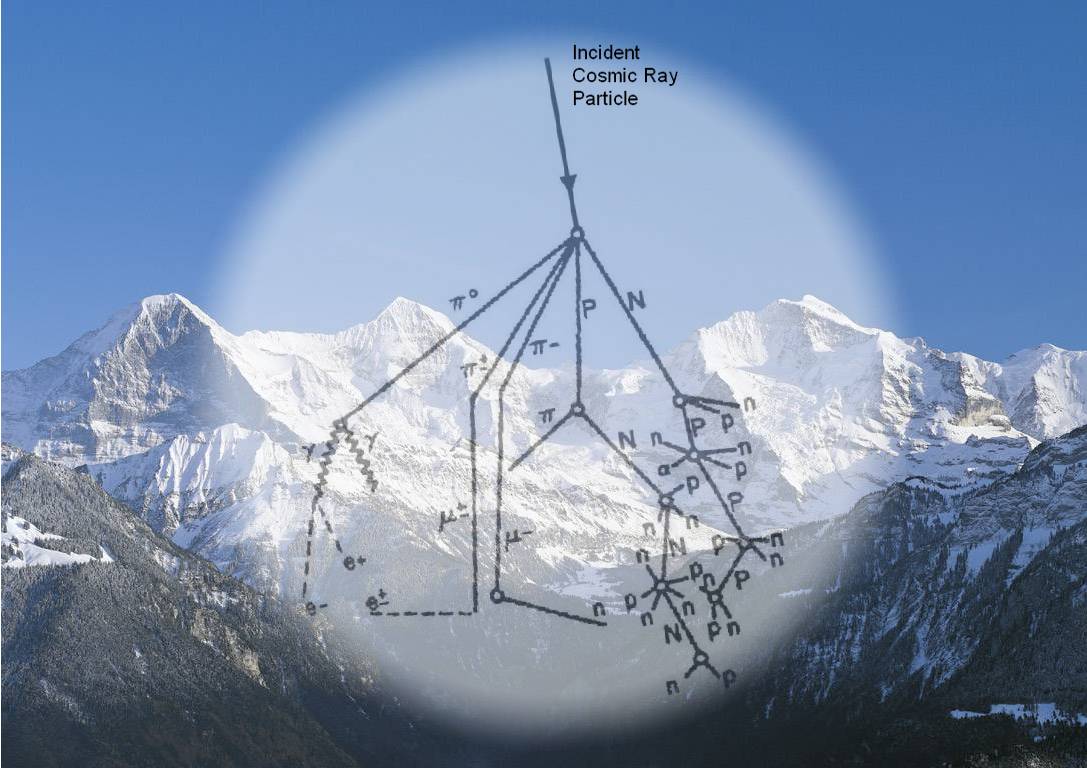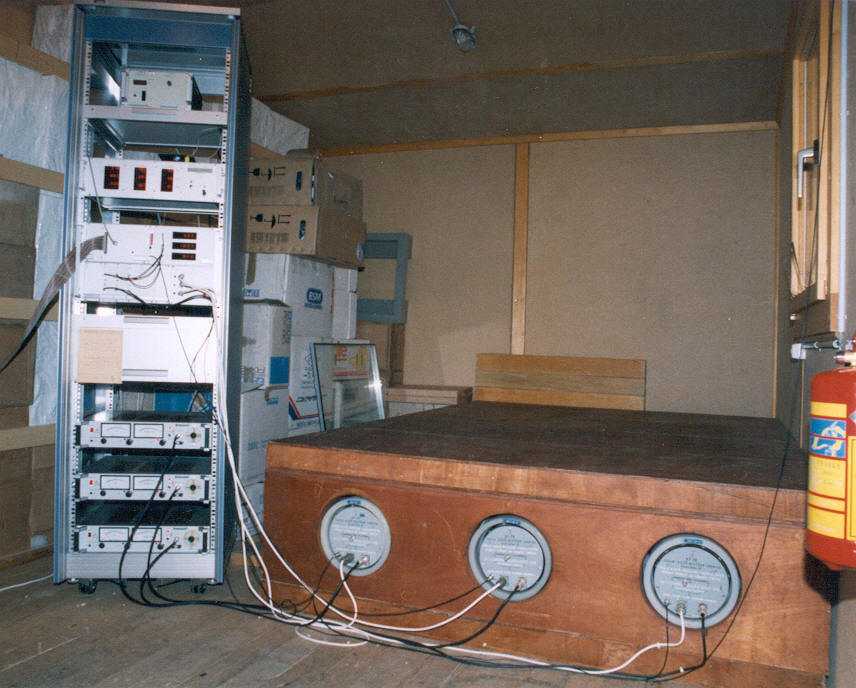English
What are cosmic rays?
When we look at the sky, we see bright objects: the Sun of course, planets, stars, nebulae … All this is light, electromagnetic waves. With specialised telescopes, we can also detect electromagnetic waves that are invisible to the human eye, such as infrared or ultraviolet emission, radio waves, X-rays.
Since the early 20th century we know that the Earth is not only hit by such waves, but also bombarded by charged energetic particles: protons, ions, electrons that come in at nearly the speed of light. These particles are called cosmic rays, and they tell us a story about the Universe that we would not learn from light alone.
Cosmic rays provide a tool to explore the Universe, but they also directly affect the Earth. We want to observe these particles to understand their origin, to use them as a tracer of solar disturbances, and to monitor their effects on technology and human beings.
Where do they come from?
Cosmic rays come from places in the Universe where some kind of explosion occurs: the remnants of stellar explosions (supernovae), active galaxies, and also from the Sun.
Galactic cosmic rays come in permanently, although their intensity is modulated by the Sun. Particles accelerated at the Sun, solar cosmic rays, are more sporadic. They come as individual events, on top of the usual particle flux from the remote Universe.

How can we observe them?
Cosmic rays do not directly hit the ground, but collide with the atoms of the high atmosphere. That creates lots of secondary particles: protons, neutrons, muons and electrons. Provided the primary particle has a minimum speed of about 200,000 km/s, two thirds of the speed of light, a significant number of secondary nucleons, muons and other particles can be detected by ground-based particle counters near the magnetic poles.
The magnetic field of the Earth is another filter, although it plays no role at the magnetic poles of the Earth. But the closer one comes to the equator, the faster the primary charged particle must be to get across the magnetic field. Particle counters at different places on the Earth therefore measure cosmic rays of different minimum speeds - they reveal the energy spectrum of cosmic rays.

What is a neutron monitor?
In order to increase the number of particles that are eventually detected, the counters of neutron monitors are surrounded by lead. There the secondary nucleons, and a few muons, produce further neutrons. The neutron monitor counts these neutrons, but they ultimately reveal the cosmic ray flux at the top of the atmosphere.
Neutron monitors have been used since the 1950s. They are still the state-of-the-art instrumentation for measuring cosmic rays from the Sun and the low-energy component of cosmic rays from elsewhere in the Universe.
Why do cosmic rays matter?
Cosmic rays are a formidable source of information about the violent Universe. We want to know under which circumstances and how charged particles are accelerated to such high energies or speeds.
Cosmic rays can be used to monitor perturbations of the interplanetary medium that might hit the Earth. Many years of observation have shown that the galactic cosmic ray intensity is modulated by the magnetic field of the Heliosphere: when the Sun has many spots, the magnetic field is strong in the Heliosphere, and the intensity of galactic cosmic rays is reduced at the Earth. When there are no spots, the shielding is weak, and many cosmic rays reach the Earth. Faster intensity variations can be generated by solar eruptions, where magnetic fields are expelled into the Heliosphere.
Furthermore, cosmic rays have some impact on the Earth. They affect the Earth's atmosphere: by the secondary particles they produce when colliding with atmospheric atoms, and by the ionisation of atmospheric atoms. Fast charged particles are a source of irradiation, as are X-rays. While there seems to be little effect on the ground, civil aircraft crew are less protected by the atmosphere and have to be monitored. Neutron monitor measurements provide the basic data.
Find a printable version of the present page in the first NMDB brochure (pdf / 2Mb).